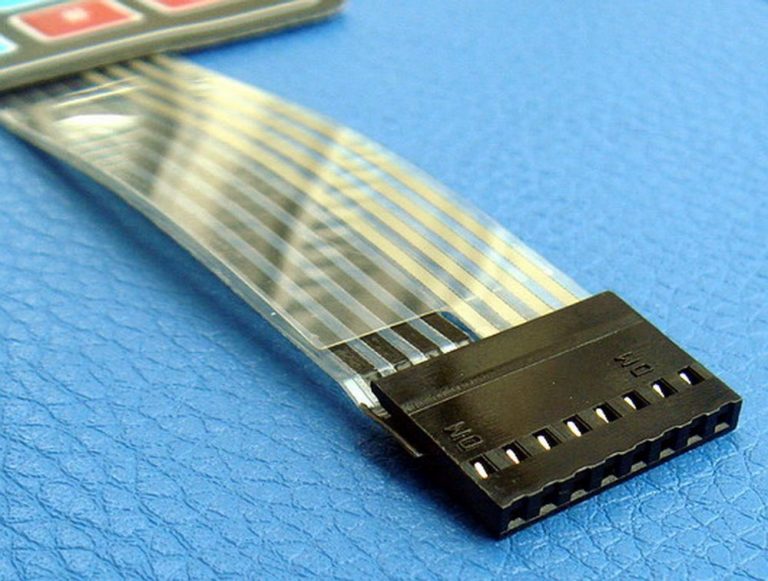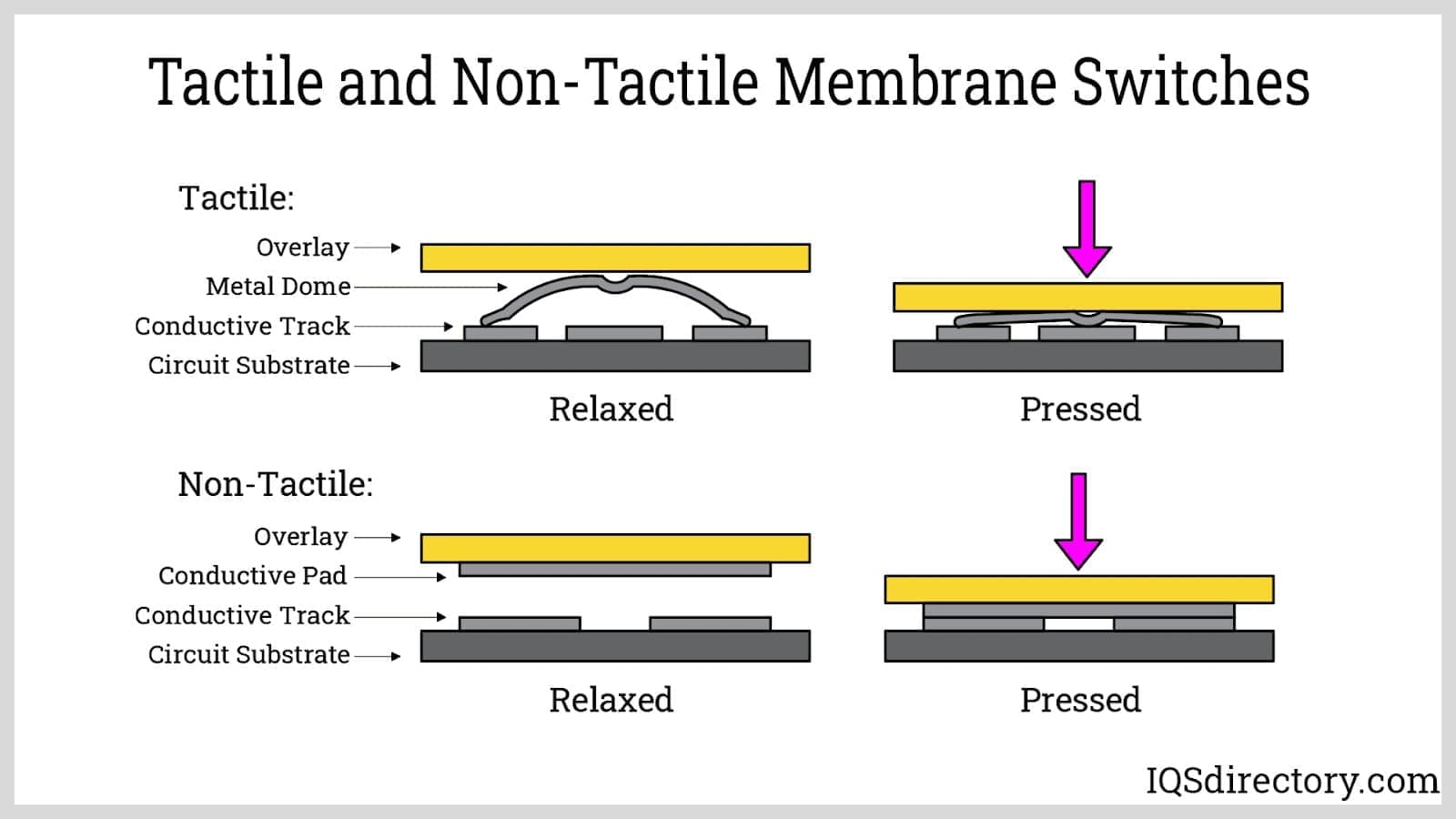How Membrane Switches Enable Lightweight and Resilient User Interface Solutions
How Membrane Switches Enable Lightweight and Resilient User Interface Solutions
Blog Article
Discover the Future of Control Interfaces: Why Membrane Changes Are Gaining Appeal
As markets progressively prioritize reliable and easy to use control interfaces, membrane layer switches are arising as an engaging solution that incorporates performance with design versatility. Their resilience and compact nature make them particularly fit for a variety of applications, from medical care to consumer electronic devices. With the rise of clever innovation and sustainability concerns, the innovations and capabilities surrounding membrane layer changes warrant closer assessment. What specific benefits do they supply that could redefine our communications with modern technology in the coming years?
Comprehending Membrane Layer Buttons
Membrane buttons are integral parts in modern-day digital tools, offering as user interfaces between users and equipments. These buttons are composed of several layers, normally consisting of a graphic overlay, a spacer layer, and a circuit layer.

Toughness is one more key attribute, as membrane buttons can be created to resist ecological elements such as dampness, dust, and chemicals. This strength makes them optimal for applications in harsh problems. Overall, recognizing the structure and feature of membrane buttons is essential for valuing their role in the development of interface in today's technology-driven world.
Trick Advantages of Membrane Layer Switches
Using a variety of benefits, membrane layer buttons have ended up being a preferred option in numerous applications (Membrane Switches). One of the key advantages is their small style, making it possible for producers to maximize space in devices without compromising performance. Membrane layer buttons are lightweight, which is especially beneficial in portable electronic gadgets

Additionally, these switches supply superb resilience. Built from versatile products, they are immune to dirt, dampness, and a selection of ecological variables, making them suitable for harsh conditions. This sturdiness commonly equates right into a much longer life expectancy contrasted to standard mechanical switches.
Additionally, membrane layer changes enable seamless combination of symbols and graphics, providing aesthetic flexibility and boosting user experience. Modification alternatives are extensive, making it possible for brand names to produce special interfaces that align with their product identification.
An additional secret benefit is their simplicity of cleaning and maintenance. The flat surface of membrane changes protects against the build-up of dust and gunk, making them optimal for hygienic settings. Finally, membrane switches are cost-efficient, as they can be generated in high volumes at reduced prices, making them easily accessible for a wide variety of sectors. These variables collectively add to their boosting popularity in modern-day control interfaces.
Applications Throughout Industries

A myriad of markets are increasingly embracing membrane layer buttons because of their versatility and performance. These regulate interfaces are specifically prevalent in the vehicle field, where they are utilized in control panels and infotainment systems, providing a straightforward and sleek interface. In the clinical area, membrane changes promote the operation of diagnostic devices and person tracking systems, making certain reliability and simplicity of usage in critical circumstances.
Furthermore, the customer electronic devices industry advantages from membrane switches in gadgets such as microwaves and remotes, enabling structured layout and enhanced sturdiness. Membrane Switches. The aerospace market additionally makes use of membrane layer buttons in cockpit controls, where space restrictions demand small and effective style options
In addition, the commercial field employs membrane layer buttons in equipment control board, supplying strength versus rough settings and making certain functional performance. Retail atmospheres have actually accepted membrane switches in point-of-sale systems, enhancing customer communication while keeping visual charm.
Design Trends in Membrane Layer Switches
Progressing along with technical improvements, layout patterns in membrane switches are progressively concentrated on improving user experience and aesthetic allure. Modern membrane layer switches are being designed for simpleness and user-friendly use, allowing customers to browse user interfaces effortlessly. This shift in the direction of user-centric style emphasizes responsive comments, guaranteeing that users obtain instant confirmation of their activities.
Furthermore, customizable graphics and shades are ending up being basic features in membrane layer switch layouts. This versatility permits suppliers to produce personalized user interfaces that align with branding and details individual demands. The consolidation of backlighting is another famous trend, as it not just enhances exposure in low-light conditions however additionally adds an aesthetically striking element to the total design.
This change not only enhances aesthetics but also contributes to the overall functionality and sturdiness of the buttons. These design trends collectively underscore the growing significance of combining form and function in the development of membrane layer buttons, inevitably improving the individual experience.
Future Expectation for Control Interfaces
The future of control interfaces is poised for substantial makeover as arising innovations proceed to navigate to this site improve user communications across numerous tools. The combination of sophisticated materials, such as conductive inks and adaptable electronic devices, will enhance the versatility and capability of membrane layer buttons, making them progressively adaptable to a series of applications. In addition, the increase of the Internet of Points (IoT) will certainly drive demand for even more user-friendly, user-friendly interfaces that can flawlessly incorporate with smart tools.
As man-made intelligence and equipment discovering develop, control user interfaces will likely incorporate even more individualized functions, enabling users to connect with gadgets in ways that are customized to their practices and choices (Membrane Switches). This shift in the direction of user-centric layout will place membrane buttons as a principal on the market, specifically in industries like medical care, automobile, and customer electronics
In addition, the promote sustainability will motivate suppliers to discover eco-friendly materials and manufacturing approaches, making sure that the future of control interfaces lines up with ecological considerations. In general, as innovation remains to breakthrough, membrane switches will end up being progressively advanced, leading the way find more for cutting-edge control remedies that enhance user experience and operational efficiency across diverse industries.
Conclusion
In final thought, the enhancing adoption of membrane layer changes highlights their importance in the evolution of control user interfaces. As easy to use interfaces come to be necessary in the context of IoT and AI developments, membrane layer buttons are positioned to play a critical function.
As industries significantly prioritize efficient and easy to use control user interfaces, membrane layer buttons are arising as a compelling solution that use this link integrates functionality with layout flexibility.Durability is one more crucial attribute, as membrane switches can be developed to resist ecological elements such as dampness, dust, and chemicals.Progressing alongside technical improvements, design patterns in membrane layer switches are significantly focused on improving customer experience and aesthetic charm. Modern membrane layer switches are being developed for simpleness and intuitive use, permitting users to browse user interfaces effortlessly. These design patterns jointly underscore the growing value of incorporating form and function in the advancement of membrane layer switches, eventually enhancing the customer experience.
Report this page